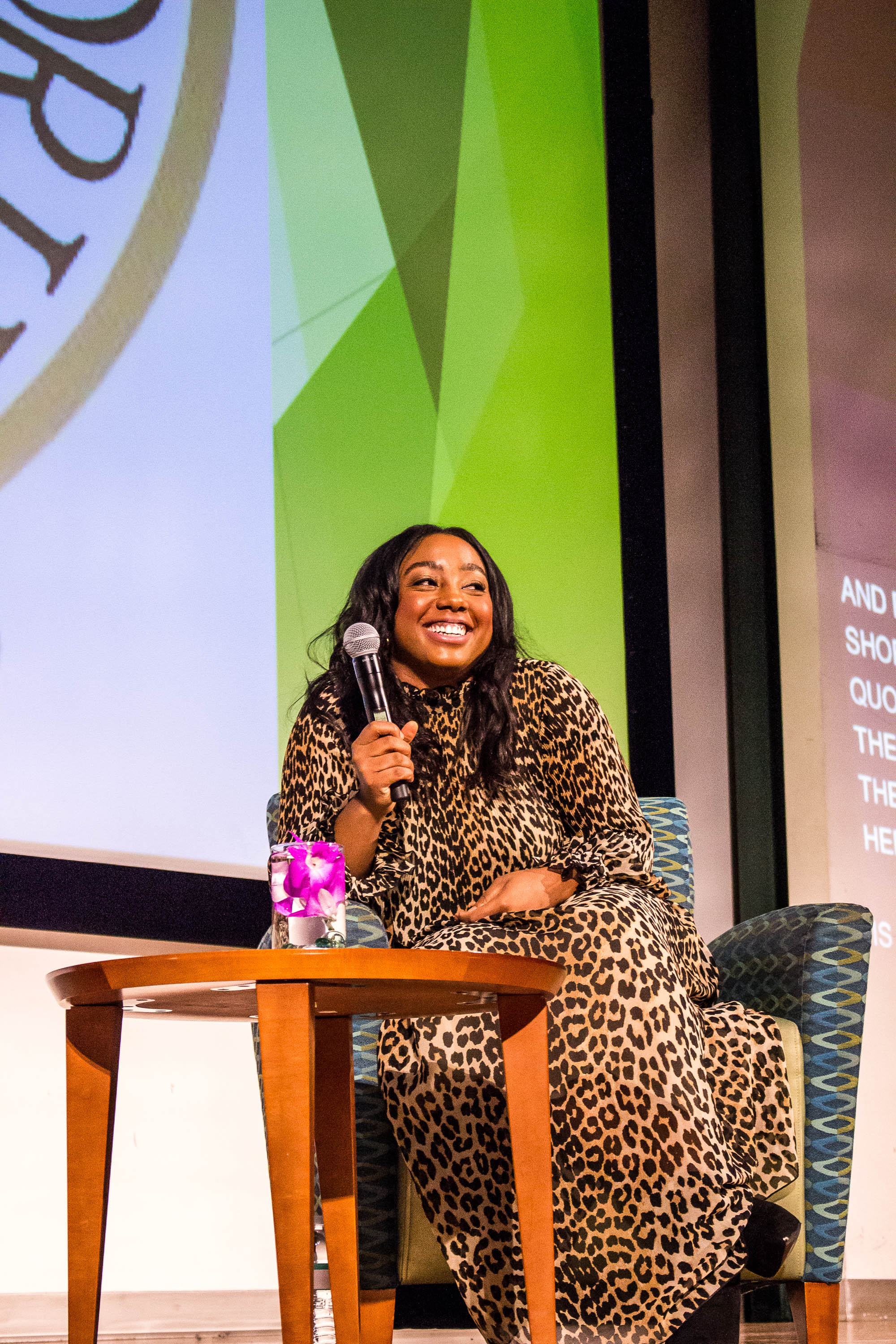Teen Vogue editor in chief shares how she honors inclusivity in the fashion industry

From nonstop meetings throughout the day to making the final decision on a photo shoot, Lindsay Peoples Wagner shared her experiences as the editor in chief of Teen Vogue and her fight to bring more inclusivity in the industry at the University Lecture Series 0n Tuesday night.
The fashion editor told an audience of about 50 people in the Marshall Student Center Oval Theater how she climbed the ladder toward becoming the editor in chief of one of the major magazines in the U.S. while breaking stigmas in the fashion industry.
“I put up all these pictures of magazines in my room and I would collect all the Teen Vogues when I was a teenager,” Peoples Wagner said. “But then my mom was like, ‘I know you like all this stuff but if you want to pursue it, you will really have to change because none of these people look like you.’
“I didn’t really think it was possible.”
Despite the odds, Peoples Wagner, 29, did not let it stop her from fighting for her dreams. Ever since a young age, Peoples Wagner said that she taught herself to sketch and she would spend her free time learning about fashion-related topics.
After graduating high school, Peoples Wagner decided to attend Buena Vista University, a small, private university in Iowa with approximately 2,000 students. Due to its small size, Peoples Wagner highlighted how the attention given to her needs, the relationships built with professors and the resources available during her time in college shaped the course of her life.
Even though she did not have high grades, Peoples Wagner joked how her low grades helped her build relationships with her professors and motivated her to pursue experiences outside of the classroom, including an internship at Teen Vogue.
Peoples Wagner started at Teen Vogue as an intern cleaning closets and organizing hundreds of pairs of Converse sneakers by color. In order to do the internship, though, Peoples Wagner had to work in a steakhouse while saving money from tips to afford housing in New York.
“I hustled my a** and I still need to say I never took anything for granted,” Peoples Wagner said. “I always worked four jobs and I was always hustling because I don’t come from a wealthy family.”
After graduating from college, Peoples Wagner moved to New York permanently and started working for Teen Vogue in an entry-level job earning $8 per hour.
Peoples Wagner said that her financial struggles put her at a disadvantage in the fashion industry as she wouldn’t receive the same respect and opportunities as her coworkers.
“If you don’t have certain things, and it feels like people don’t want to give you the opportunities and I think it also is just discouraging when you’re called the n-word or when people won’t stop touching your hair,” Peoples Wagner said.
While working up the ladder, Peoples Wagner said her experiences while working for Teen Vogue led her to fight for more inclusivity in the fashion industry.
“It’s just pure survival,” Peoples Wagner said. “I’m the only black person in most of the rooms that I’m in and that’s not comfortable. I don’t enjoy being the only one and I feel like a lot of my journey has been dealing with that and trying to understand the best way that I can go out facilitating the environment and leaving it a better place. It’s it is still survival.”
In 2018, Peoples Wagner published a story in New York Magazine’s The Cut titled “Everywhere and Nowhere What it’s really like to be black and work in fashion,” in which she interviewed more than 100 black industry professionals in the fashion business and, consequently, gained international recognition and led her to become the editor in chief of Teen Vogue.
When the story came out, Peoples Wagner left the country and went to Mexico for a short period as it turned out to be an emotionally taxing moment in her career.
“I interviewed over 150 different people in the industry and I came across findings that expose racial bias and all these other things that are happening to the industry,” Peoples Wagner said.
“I had so many people that I admired telling me that I would never get a job after publishing the story because people are always going to label me as the black girl complaining.”
Despite the challenges faced along the way, Peoples Wagner still persists in fighting for a more inclusive industry.
“What I tell everyone is that inclusivity has to be the one in which you see everything that you do,” Peoples Wagner said. “Everything you touch and everything that we’re producing has to be inclusive.”







